International Lightning Class Association
Class contact information.
Click below
Class Email
Class Website
One-Design Class Type: Dinghy
Was this boat built to be sailed by youth or adults? Both
Approximately how many class members do you have? 1600
Photo Credit:Douglas Wake

Photo Credit: Art Petrosemolo
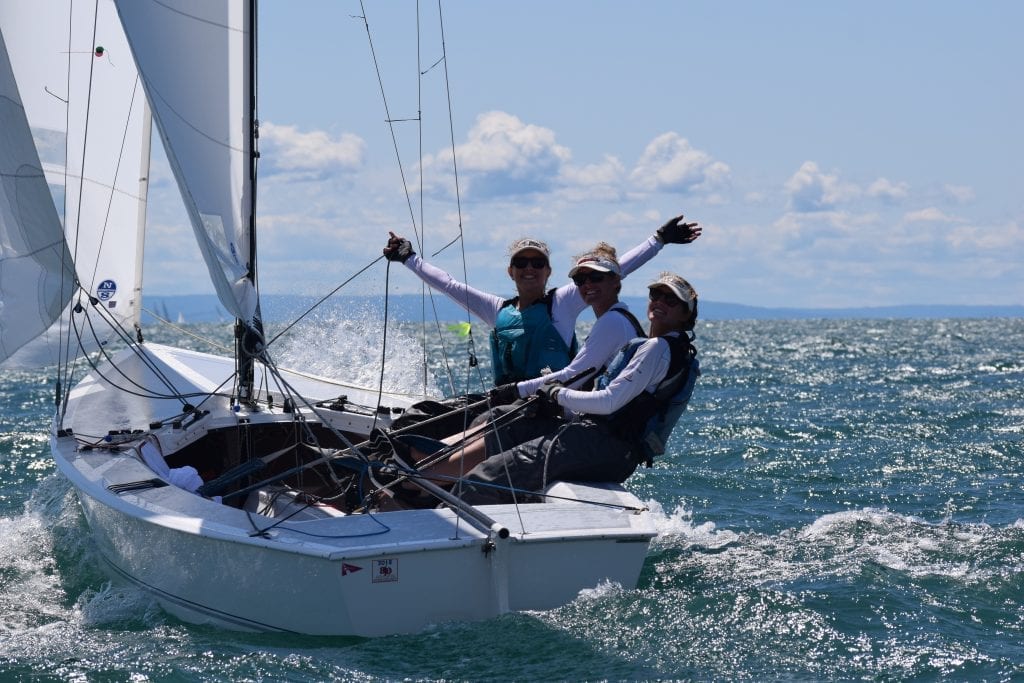

About International Lightning Class Association
The Lightning truly excels as an affordable racing boat. The rig is simple but offers sophisticated sail shape controls. The hull features a unique hard chine design that combines the stability that provides sail-carrying power, with flat bottom sections that promote planing. At 700 pounds all up, the trailerable centerboard sloop is tough enough to avoid frequent breakdowns, but light enough to plane wildly on the reaches. Membership is diverse with sailors aged 8 to 80+. Many families sail together at top events and it is common to see females make up at least 40% of competitors.
The Lightning is sailed in more than thirteen countries and in the Pan American Games. A World, Master World and Youth World Championships are held every two years. North American, South American and European Championships are held each year as are innumerable regional and District championships. Major regattas attract some of the finest sailors in the world, but you find Class members friendly and the sailmakers’ complete tuning guides helpful at getting you up to speed in a hurry.
The International Lightning Class Association is one of the oldest and best organized class associations in sailboat racing. Its primary purpose is to serve its membership, preserve the integrity of the Lightning and provide high-quality competitive events. In addition, the Lightning Class publishes monthly e-blasts and a quarterly newsletter Flashes with up-to-date regatta news, boat brokerage and ideas on how to get the most out of your Lightning. The professionally managed association and dedicated volunteers are always on hand to assist both current and potential members.
If you’re looking for a boat you can be proud to sail, one that offers dinghy handling with the performance of a sport boat, a refined design that’s free of fads, complete with the technology of today for both racing and day sailing – look at the Lightning.
Boats Produced: 15630+
Class boat builder(s):
Allen Boat Company, Buffalo, NY: https://www.allenboatco.com/
WindRider International: https://www.windrider.com/
Approximately how many boats are in the USA/North America? 11,000+
Where is your One-Design class typically sailed in the USA? List regions of the country:
East of the Mississippi, Mid-West, Texas, Denver, San Diego, Pacific Northwest Click Here for Fleet Finder Map: https://www.lightningclass.org/content.aspx?page_id=451&club_id=93488
Does this class have a spinnaker or gennaker? Yes
How many people sail as a crew including the helm? 3
Ideal combined weight of range of crew: 490
Boat Designed in 1938
Length (feet/inches): 19’0″
Beam: 6’6″
Weight of rigged boat without sails: 700 lbs
Draft: (board down): 4’11”, (board up): 5″
Mast Height: 26’2″
Back to One-Design Central
Copyright ©2018-2024 United States Sailing Association. All rights reserved. US Sailing is a 501(c)3 organization. Website designed & developed by Design Principles, Inc. -->
- New Sailboats
- Sailboats 21-30ft
- Sailboats 31-35ft
- Sailboats 36-40ft
- Sailboats Over 40ft
- Sailboats Under 21feet
- used_sailboats
- Apps and Computer Programs
- Communications
- Fishfinders
- Handheld Electronics
- Plotters MFDS Rradar
- Wind, Speed & Depth Instruments
- Anchoring Mooring
- Running Rigging
- Sails Canvas
- Standing Rigging
- Diesel Engines
- Off Grid Energy
- Cleaning Waxing
- DIY Projects
- Repair, Tools & Materials
- Spare Parts
- Tools & Gadgets
- Cabin Comfort
- Ventilation
- Footwear Apparel
- Foul Weather Gear
- Mailport & PS Advisor
- Inside Practical Sailor Blog
- Activate My Web Access
- Reset Password
- Pay My Bill
- Customer Service

- Free Newsletter
- Give a Gift

How to Sell Your Boat

Cal 2-46: A Venerable Lapworth Design Brought Up to Date

Rhumb Lines: Show Highlights from Annapolis

Open Transom Pros and Cons

Leaping Into Lithium

The Importance of Sea State in Weather Planning

Do-it-yourself Electrical System Survey and Inspection

Install a Standalone Sounder Without Drilling

When Should We Retire Dyneema Stays and Running Rigging?

Rethinking MOB Prevention

Top-notch Wind Indicators

The Everlasting Multihull Trampoline

How Dangerous is Your Shore Power?

DIY survey of boat solar and wind turbine systems

What’s Involved in Setting Up a Lithium Battery System?

The Scraper-only Approach to Bottom Paint Removal

Can You Recoat Dyneema?

Gonytia Hot Knife Proves its Mettle

Where Winches Dare to Go

The Day Sailor’s First-Aid Kit

Choosing and Securing Seat Cushions

Cockpit Drains on Race Boats

Rhumb Lines: Livin’ the Wharf Rat Life

Re-sealing the Seams on Waterproof Fabrics

Safer Sailing: Add Leg Loops to Your Harness

Waxing and Polishing Your Boat

Reducing Engine Room Noise

Tricks and Tips to Forming Do-it-yourself Rigging Terminals

Marine Toilet Maintenance Tips

Learning to Live with Plastic Boat Bits
- Sailboat Reviews
Five Rides that Push the Limits of High-performance Sailing
Practical sailor looks at a wide range of sailing craft that emphasize light-air sailing ability and maximum speed.
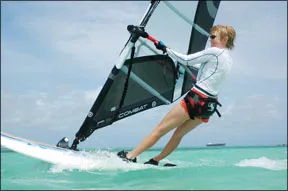
When yacht designer Bill Lee latched on to the phrase “Fast is Fun,” he did more than label his own design efforts, he sparked a new generation of sailboats that continue to attract ardent followers. Much has changed since those early days when Lees Santa Cruz 27s were being built by land-bound surfers waiting for big winter swells.
Lees plant, affectionately known as the “Chicken Coop,” has been upstaged by climate-controlled facilities and much more esoteric building techniques, but the impact of his designs-particularly on the traditional East Coast naval architecture establishment-reverberates today. The high-performance experiments of Lee and other like-minded sailors spawned a worldwide obsession with lightweight boats that could plane on a reach, and thanks to innovations in designs and materials, that passion continues to grow today.
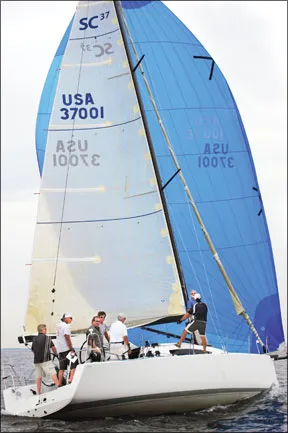
Photos by Ralph Naranjo
This fledgling group of speed enthusiasts prompted the evolution of a number of design elements and construction techniques aimed squarely at maximizing speed: planing hull forms, carbon rigs, specialized hardware, and sail plans that favor lift over drag. Add to this the innovations from C-Class catamarans, planing Aussie skiffs, and the offbeat foil flyers, each adding its own signature performance push, and its no surprise that sailing speed records have continued to tumble.
The legacy left in the wake of these seafaring hot-rodders has benefited the average sailor with new materials, hardware, and design improvements found in modern boats. And now, theres a growing interest in the fleet of what Lee calls “street legal” boats that further push the envelope of the fast-is-fun philosophy. These boats are usually found in the less- trafficked corners of the boat shows, in essence a sideshow thats well worth a closer look.
After sifting through the field of sailing sports cars on the market today, PS identified five very different production craft that lived up to our expectations. They all meet the “speedster” criteria, but by no means fall into the same mold. At the top end of our size and cost profile is a Lee legacy, the Santa Cruz 37, a wolf in wolfs clothing that offers performance as priority one, two, and three on the design criteria list. Next in line is the Andrews 28, a breakaway racer/cruiser that packs performance and a Spartan minimalists cruising package into a 25.7-foot waterline. Hard to miss is the Open 6.50, an out-and-out go-fast sport boat with room below for little more than a cooler and a bevy of high-tech sails. For the diehard dinghy sailor, we highlight the quick planing Stealth, a 14.5-footer that redefines reaching, and in true giant-slayer fashion, can fly by most 40-footers on a power reach. Finally, we hop aboard a turbo-charged windsurfer, the Starboard Futura, which is powered by a Neil Pryde sail and runs away with the award for most speed and fun for our dollar.
While some of these boats are designed with racing in mind, we rate them here purely according to their fun-factor, the ability to deliver the exhilaration that comes from sailing a high-performance boat. We are particularly interested in boats that can offer satisfying sailing in lighter winds of about 8 knots, common in most areas of North America. If exciting racing on a weekly basis is your goal, then we would recommend also looking at more mainstream boats that are supported by large Performance Handicap Racing Fleet (PHRF) or one-design fleets in your region.
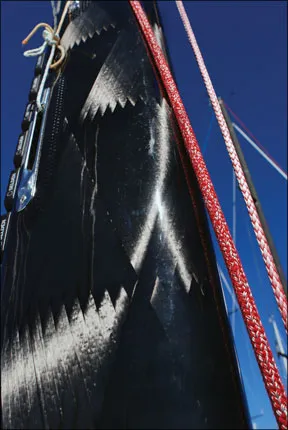
Santa Cruz 37
Lee may no longer be building boats, but his Santa Cruz legend lives on. The latest iteration of the fast-is-fun form belongs to a lightweight carbon-fiber/ epoxy-resin speedster designed by Kernan Yacht Design and built to International Standards Organization (ISO) Category A standards (designated for boats generally considered capable of offshore sailing). The hull and deck are bonded together, and carbon/PVC foam bulkheads and a carbon-reinforced E-glass grid are set in place using a methacrylate adhesive, creating a stiff, monocoque structure. Theres even a hydraulic lifting option that allows the fin and bulb keel to be retracted vertically for entry into shoal water.
The specs are interesting, and they highlight that this is a boat that must be sailed to be appreciated. Like a cat that is ready to pounce, the large mainsail-dominated sailplan delivers a responsive boost to every puff that crosses the deck. The SC-37 sailplan is indicative of the performance trend toward large mainsails and smaller jibs, and with a sail area/displacement ratio of 28, theres plenty of power to be found in the sailplan. Off the wind, the options increase.
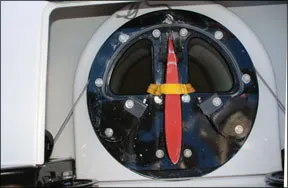
A quick look at the pointy end of the boat reveals a double-barrel set of stem projections. The smaller, well-reinforced A-frame is meant for code-sail handling and is rugged enough to take the on-the-wind loading of a close reach in oceanic conditions. The 7-foot retractable carbon sprit puts the tack of an asymmetric spinnaker right where it belongs, in clear air well away from the furled headsail.
Below is a nicely accented interior thats more than a den for sailbags. The galley, berths, and a small center-line table offer functional accommodations. The cabin ambiance may not live up to a liveaboard cruisers expectations, but it certainly offers welcome solace for the off watch.
With one set of jib winches in the cockpit and a set on the cabintop for spinnaker handling, the helmsperson is not crowded, and theres space for every function. The main halyard is led below and clutched off on the spar itself, minimizing stretch and keeping the halyard tail well out of the way. Having to go below to blow the main halyard is not the best arrangement from a safety and convenience standpoint, but on a boat likely to have multiple crew members, it is not as much of an issue as it would be on a boat aimed at singlehanders or cruising couples. The only other problem we noticed was some rudder cassette binding when hard on the wind. By presstime, the builder had already changed the bearing engineering to eliminate this problem.
Bottom line: Despite its teething pains (rudder problems at this level of the game are not acceptable), the SC-37 truly ramps up the fun factor in this size category. If youre looking strictly for an IRC racer, there are better options out there, and in the more mainstream PHRF or one-design fleets racing, there are some Beneteaus and J/boats in this size range that may better meet your needs. However, if you want to flat out fly on a boat with modest cruising comforts, the SC-37 delivers in spades.
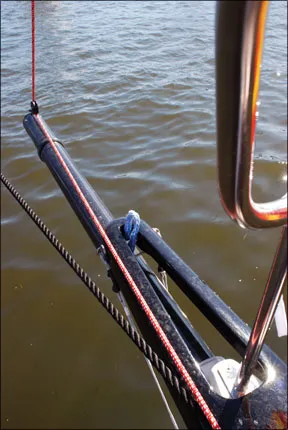
This 21-foot sport boat has been described as “100-percent carbon and 200-percent adrenalin,” and the combination delivers hoots and smiles from all on board. With a 43-percent ballast ratio, wide beam, and a sail area to displacement ratio that redefines the concept of being powered up, this high-strung sportboat gets going while others remain stuck in the water.
Carrying the fast-is-fun philosophy to the next level, Group Finot pushes the limits of what should be labeled “street legal.” In this miniaturized iteration of the go-fast ideal, they have merged an ultra-lightweight (1,168 pounds), carbon and foam-sandwich hull with a carbon sprit and spar. This delivers the ability to carry 425 square feet of sail upwind, and 812 square feet off the wind. Reminiscent of scaled-down 60-footers, this ultralight with a wide beam aft shows zip on and off the wind.
The Open 6.50 is an engineering masterpiece, and a clear example of how aerospace technology can be put to good use in boat building. The hull laminate and foam core are assembled dry in a closed mold and slipped into an autoclave to be baked under elevated pressure and temperature-curing like a high-tech loaf of bread. The carbon-fiber prepreg resin flows when heated, and the exacting nature of the pressure induced bond leads to laminate consistency and the highest of strength-to-weight ratios. Foam flotation and a sealed carbon mast provide the boat with an unsinkable ISO Category-C label and added resistance to capsizing.
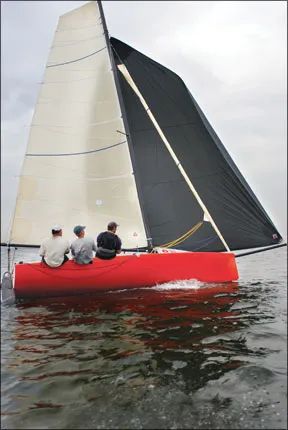
Thanks to a drop-keel design, the Open 6.50 can change its draft from 6 feet, 6 inches to 1 foot for easy trailer launching and recovery. Twin rudders tame steering characteristics despite the ultra-wide beam carried all the way to the transom. All of the controls are placed at just the right points for easy trimming, and the flat-top, high-aspect-ratio main and jib deliver maximum punch. The 7-foot retractable carbon sprit adds a downwind dimension to sailing that can only be described as turbocharged.
Optimum crew size varies with conditions and how hard the throttle will be kept down. Two can have plenty of fun sailing the boat, but to squeeze out maximum performance, three to five seems to be the right number, and the range depends upon a tally of size and skill.
The Open 6.50 is an all-Harken hardware platform, and both the deck layout and choice of gear fit the job at hand. The boats light-air ability is astounding, and in only 10 knots of breeze, the crew can coax bouts of planing. Hiking is optional, and remains a legs-in effort, but when the true wind and boat speed start to look the same, its amazing how far forward the apparent wind moves, another reason that a sprit-set, reaching asymmetric spinnaker is favored over a fuller-cut, deep reaching sail.
Bottom line: The Open 6.50 revs up the fine art of daysailing, but the big downside is the price tag, about the same as a well-appointed BMW. With it comes no bunks, diesel auxiliary, or potential for overnighting-just the pure enjoyment of having one of the fastest and most fun sailing machines to be found on any local bay, lake, or other inshore estuary.
Alan Andrews has introduced a new breed of racer-cruiser, and theres good reason to see it as a break-through boat. Gone is the gingerbread trim of tradition and the excess weight that creates increased wetted surface, skin drag, and all the other drag issues that give many cruisers a chronic case of the slows. In its place is a minimalist approach-simple but functional basic cruising amenities, a compact diesel auxiliary and an obvious emphasis on the rig, sailplan, and deck layout-the stuff that sailing is really all about.
The foam sandwich hull is created through a resin-infusion process that minimizes void content and maximizes core adhesion. Carbon fiber is used in key high-load areas to achieve the necessary strength with the least amount of additional weight. A grid is molded into the bilge and loads from the deck-stepped spar are transferred via a compression post to the grid.
An innovative lifting keel retracts into a centerline slot, masquerading in the cabin as a convenient table. With just a quick hoist, the 7-foot deep-draft foil and bulb keel morphs into a 2-foot, 8-inch gunkholer thats trailerable, a feature that opens up North Americas most appealing cruising destinations.
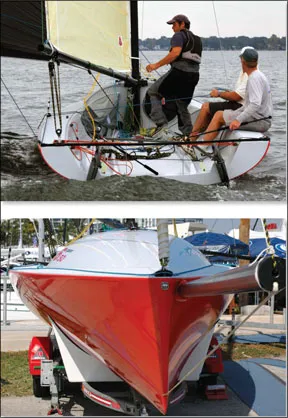
A high-aspect ratio, carbon fiber, tiller-steered rudder can be easily pulled out of its transom-mounted cassette. The combination keel and rudder adjustability make the Andrews 28 much more than just another reincarnation of a Midget Offshore Racing Club (MORC) boat.
When it comes to weekend adventure or a weekslong summer cruise in a remote trailer-sailing destination, theres much going for the A-28. Its accommodations, though far from sumptuous, are adequate for the job at hand. With a sink, one-burner stove, ice box, and enough space to prepare a simple meal, the mini galley rates an adequate score. The berths are comfortable, and theres a small but welcome nav station. Tankage is minimal, but with an enclosed head, albeit with a shade-like faux door, the boat qualifies as a pocket cruiser.
The real appeal of this boat is found underway, when its thoroughbred handling characteristics and efficient sailplan come into their own. The carbon sprit allows a sizable asymmetric spinnaker to be handled by a shorthanded crew, and the sail area is enough to keep things moving even when the breeze isn’t much over 5 knots. The tiller-steered helm is a delight, and Andrews legacy rings through loud and clear.
Bottom line: Sylvana Yachts has delivered a boat built to a performance standard. They have kept the weight in check, and the result is reminiscent of when Porsche built its original speedster, a vehicle that rekindled the fun of driving. Like the German auto icon, Andrews and Sylvan have come up with a sensible price point for their redefined pocket racer/cruiser. At just shy of $90,000, the boat is in the same price point as Hunters, Catalinas, and Beneteaus with similar waterline lengths.
Stealth 14.6
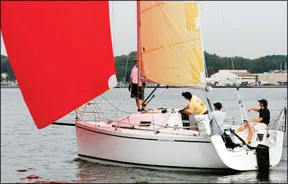
Some sailors see dinghies as childs play while others revel in a chance to hold onto a bit of youth. In truth, the Stealth is more Aussie skiff than traditional 420 or Flying Junior. From above, its shaped like a pizza slice, and the hard chines, high-aspect ratio alloy blades and substantial carbon sprit allude to an elevated level of performance. Conceived by the crew at Kernan Yacht Design and built by CL Sailboats of Fort Erie, Ontario, the Stealth injects rocket fuel into the sport of dinghy sailing.
Perhaps the biggest surprise in this little speedster is the sensible blend of materials that have been used to deliver performance at an affordable price. The hull and deck are comprised of a hand-laid E-glass sandwich structure that is joined with a methylacrylate adhesive called Plexus. The combination of good workmanship and mainstream materials delivers a stiff, durable hull that weighs in at 150 pounds, making it capable of car-top transport. By avoiding esoteric materials and costly molding procedures, the builder is able to add carbon spars and North Sails canvas to the package and still keep the boat price just shy of $10,000.
One of the most interesting attributes of this little skiff is the asymmetric spinnaker that can be set and doused with one set of lines. In 15-knot conditions, a singlehander simply bears off a tad, puts the breeze on the beam, and pops the chute, adding a warp-speed boost. Instead of launching into chaos, the chine digs in, and the boat climbs on top of the water. Sailing takes on a definite surfing overtone, and the positive control of the helm keeps things under control. When its time to reign in the excitement, theres no need for any white knuckle gymnastics, just uncleat the double-ended set-and-douse line, and retract the asymm into its turtle. Caging the beast has never been so easy.
Bottom line: Kids growing bored with nudging a conventional dinghy through the water will gain a new perspective about sailing the moment they set off on a double-digit plane, and the Stealth brings that goal within easy reach. If a bargain-priced, plane-on-a-reach performance will make your day, the Stealth is bound to hold appeal.
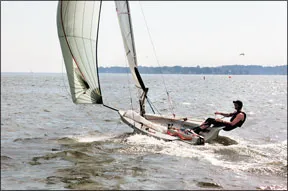
- Starboard Futura
The irony in this David-and-Goliath quest for speed under sail is that the smallest, lightest, and less expensive gear often goes the fastest. And nowhere is the sail area/displacement ratio as telling as it is with the last of our speedsters, a Starboard windsurfer and a Neil Pryde sail.
This stand-up sailer has no cockpit, rudder, standing rigging, or hint of creature comfort beyond padded footstraps. But it can leave all of the other boats reviewed here in the dust. The downside of going 25 knots-plus on a windsurfer is the need to spend a couple of seasons developing the skill to access this planing phenomenon. Todays wide, light boards and high-aspect sails make this learning curve much easier than it was during the dawn of the sport when narrow, longboards weighing as much as an elm tree were propelled with tablecloth-like sails.
Test pilot Tara Mitchell (photo above) tried out a 111-liter-volume board powered with a 53-square-foot Neil Pryde sail, one of many designs the company has pioneered. The “Combat” sails are highly reinforced and often used in heavier winds. Carbon masts and booms also fit the strong-and-light theme, and when it comes to shaping up the innovations of sailmakers like Neil Pryde, stiff carbon spars are a big plus. Interestingly, innovative full-batten design sails with fat-head high-aspect ratio shapes were seen on windsurfing sails well before Americas Cup syndicates caught on to their advantage.

Bottom line: Companies like Starboard manufacture a wide range of boards that are light, stable, and fast. The new Futura model is a responsive, highly maneuverable board thats easy to plane and perfectly at home in a wide range of conditions.
Fast, light boats are fun to sail, but there are a few tradeoffs that boat buyers should keep in mind. The first is that all the performance is contingent upon keeping the boats as light as possible, and if youre a person that brings gear to the boat but never takes anything home, beware of whats happening to the waterline. Just as multihulls bog down when overloaded, so do these nimble go-fast monohulls.
Theres also a need to visualize these boats as sports cars, not pickup trucks, and while letting an old Westsail pound against a pier will usually result in more damage being done to the pier than the boat, these new hulls with their stiff, thin skin, sandwich structure arent built to take such non-sailing point loads.
Although Technical Editor Ralph Naranjo, an avid windsurfer, favors the stand-up side of performance sailing and points to the knots-per-dollar advantage the windsurfer offers, he agrees that among our test field, the Andrews 28 is the best all-around performance cruiser/racer for our general readership. Its a boat that can be club-raced by a shorthanded crew and can serve as an excellent pocket cruiser for those who rank voyaging under sail higher than dockside entertaining. This little sloop has been designed to be easily maintained and quick to get underway-features that definitely deliver more hours under sail.
- Santa Cruz 37 in Context
- Open 6.50 in Context
- Andrews 28 in Context
- Stealth 14.6 in Context
- Download PDF Format
RELATED ARTICLES MORE FROM AUTHOR
Leave a reply cancel reply.
Log in to leave a comment
Latest Videos

Island Packet 370: What You Should Know | Boat Review

How To Make Starlink Better On Your Boat | Interview

Catalina 380: What You Should Know | Boat Review
- Privacy Policy
- Do Not Sell My Personal Information
- Online Account Activation
- Privacy Manager

Boat Navigation Lights Rules: Illustrated Beginners Guide
When navigating at night, the lights on other boats are your first clue about the moving dangers around you. And your navigation lights are your first line of safety in avoiding collisions in the dark, and they tell others vessels what you are and what you are doing. The rules sound complex, but with a little understanding you can get the basics for any situation.
So what are the basic navigation light rules? For most small vessels, motoring requires red and green (port and starboard) lights, and a white light visible in all directions around the boat. This is almost always a stern light and a masthead light on sailboats. Boats under sail require port and starboard lights, and a white stern light. Sailboats below sixty-five feet may show a tricolor light at the masthead instead of side and stern lights when sailing.
That's it, in a nutshell. There's a little more to it, as the rules change with different sizes and there are some specifics about angles of display for the colors. Identifying other ships at sea requires more study, but the basics are the same. And it's not much trouble to make sure you've always got the proper lights on your vessel.
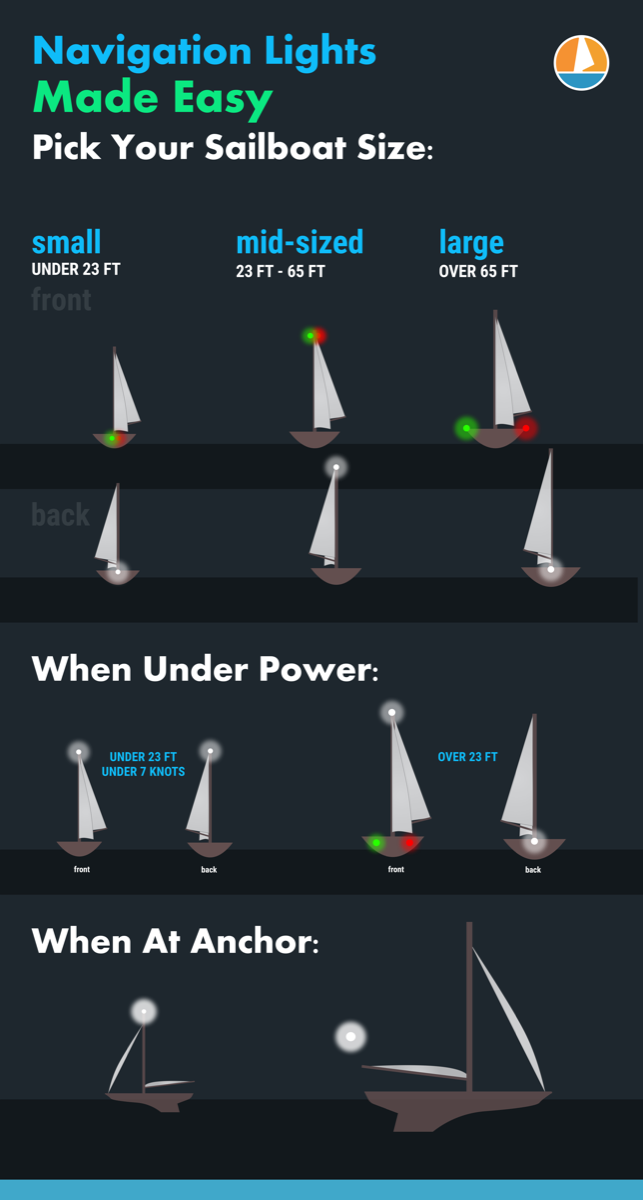
On this page:
What are the official colregs rules for your sailboat, what about the uscg (united states coast guard) rules, lighting at anchor, identifying the boats around you.
The International Regulations for the Prevention of Collision at Sea , abbreviated "COLREGS" is very specific about the lights required, their shapes and sizes, and the distance they must be visible. For the smaller boat, the following definitions apply.
- Masthead Light - a white light placed centerline on the boat showing an arc of 225 degrees with 112.5 degrees either side of the front of the vessel.
- Sidelights - A red light on the port side and a green light on the starboard. They must show an arc of 112.5 degrees from centerline of the bow.
- Stern light - A white light on the stern of the boat showing an unbroken arc of 135 degrees from centerline of the vessel.
- All-round light - A light showing in an unbroken arc of 360 degrees.
The good news is you need not measure these angles. Any properly installed USCG or COLREGS approved light which will cover the correct arcs. If you have to replace the original light from your boat, make sure it's with an approved replacement.
Lights When Sailing
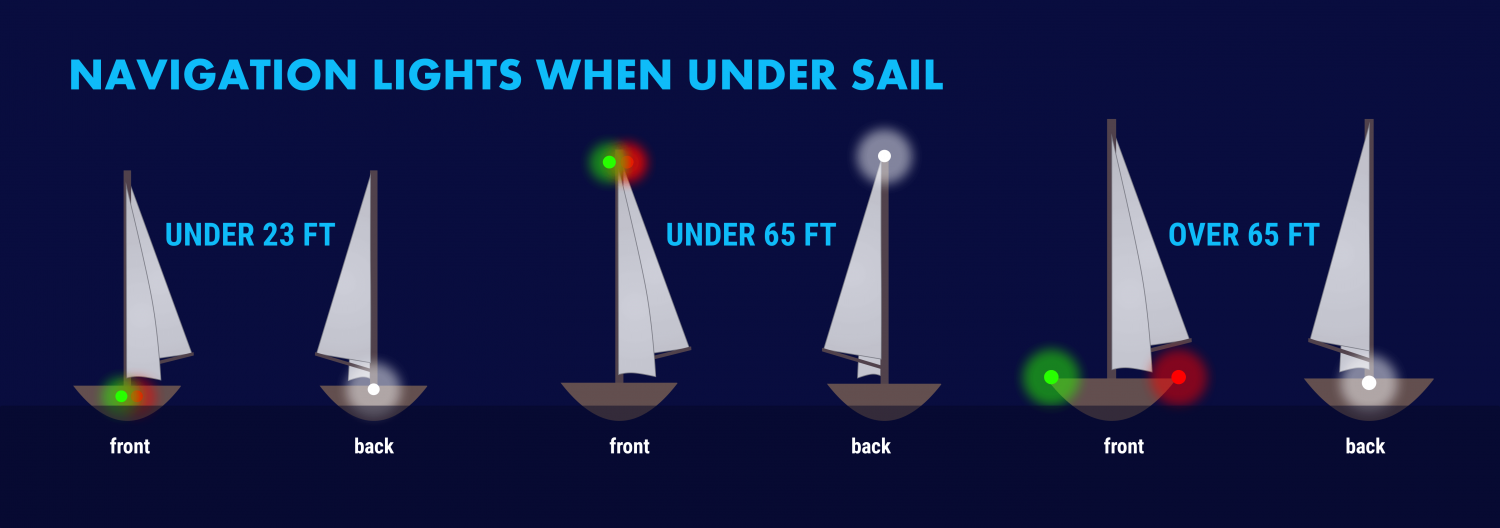
The specific rules for a sailboat under sail are in COLREGS Rule 25 and vary slightly with the size of the boat. A sailboat powering is considered a power boat and falls under in Rule 23.
- Under 23 feet (7 meters) - side lights and a stern light, possible. If these lights can not be displayed a light must be kept at hand to help avoid a collision. This can be a bright flashlight.
- Over 23 feet - Side lights visible to one nautical mile and stern light visible for two.
- Vessels under 65 feet may combine both sidelights into a single lantern on the bow.
- May show a tricolor light on the masthead instead of sidelights and a stern light. It's one or the other though, do not show these lights at the same time .
- Masthead light must be visible for three nautical miles, all other lights must have a two nautical mile visibility.
- Side lights must be separated.
- May not show a masthead tricolor light.
- Masthead light must have five nautical mile visibility, all other lights must be visible for two nautical miles.
- Optional masthead lights - any vessel under sail may display a red light over a green light at the masthead with sidelights and stern light. The red over green may NOT be displayed with a masthead tricolor light. It's one set or the other.
Lights When Motoring
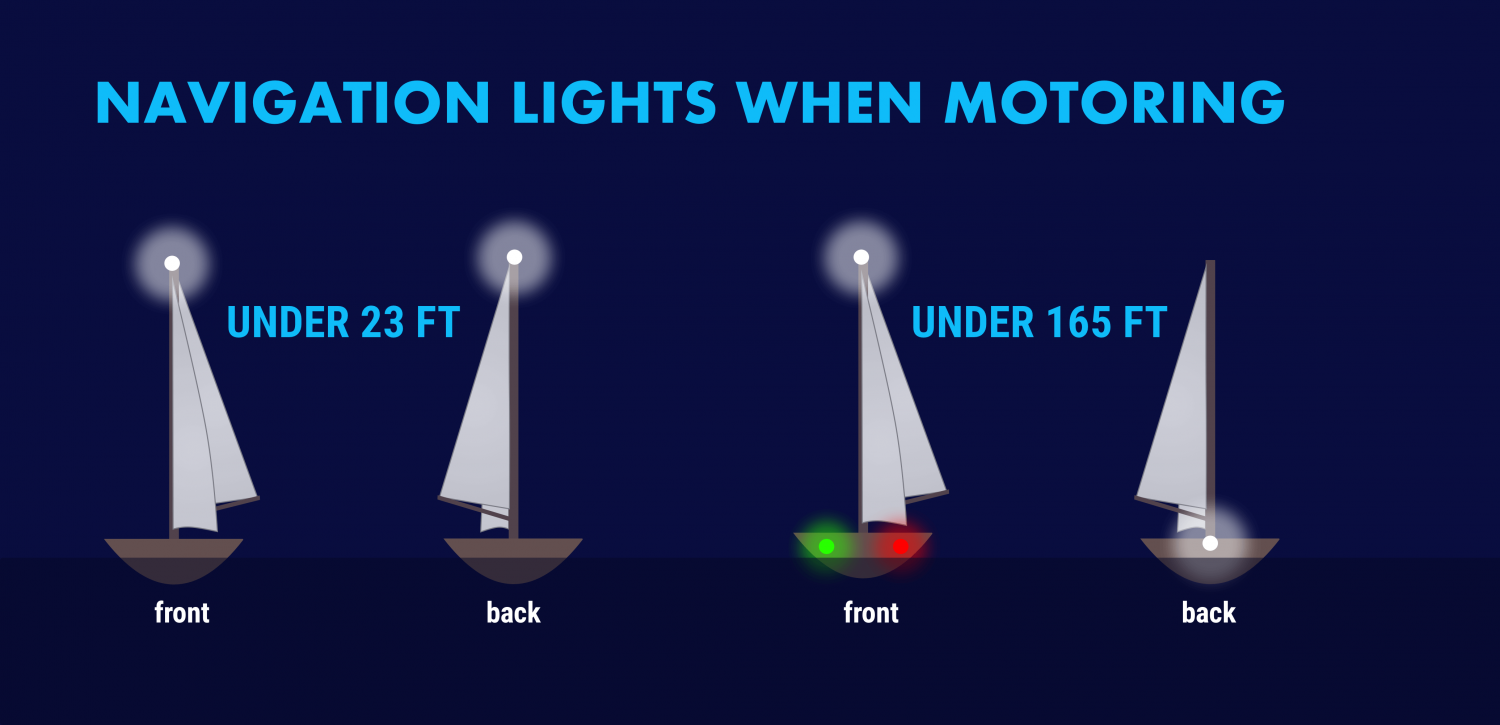
For all navigational purposes a sailboat under power is considered a power boat. This includes motor sailing - if the engine is on and providing propulsion you are on a power boat, even if the sails are up . This applies to navigation lighting, sound signals in fog and limited visibility, and rights of way.
Sailboats under 50 meters under power need to show:
- A masthead light
- Stern light
A power-driven vessel under 23 feet (7 meters) that does not exceed seven knots of speed may display an all around white light, though sidelights should be used if available.

The USCG has published its own "Rules of the Road" that are based on the COLREGS. In addition, it has rules for the "Inland Waterways" for rivers, inland lakes and the Great Lakes.
The good news is this has no impact on what you have to do with your own boat.
They mostly relate to lighting changes on towed vessels like barges and tugs. For example, a vessel towing or pushing another vessel in the ocean under COLREGS shows two masthead lights, sidelights and a stern light, whereas in Inland Waterways the towing or pushing vessel displays two yellow towing lights instead of a white stern light.
If you sail on lakes, rivers or the Great Lakes where towed commercial traffic is common you should learn the inland lights, but coastal or ocean sailors will never see these.
When you anchor outside a designated mooring field, you should display an all around white light at the masthead or as high in the boat as practical.
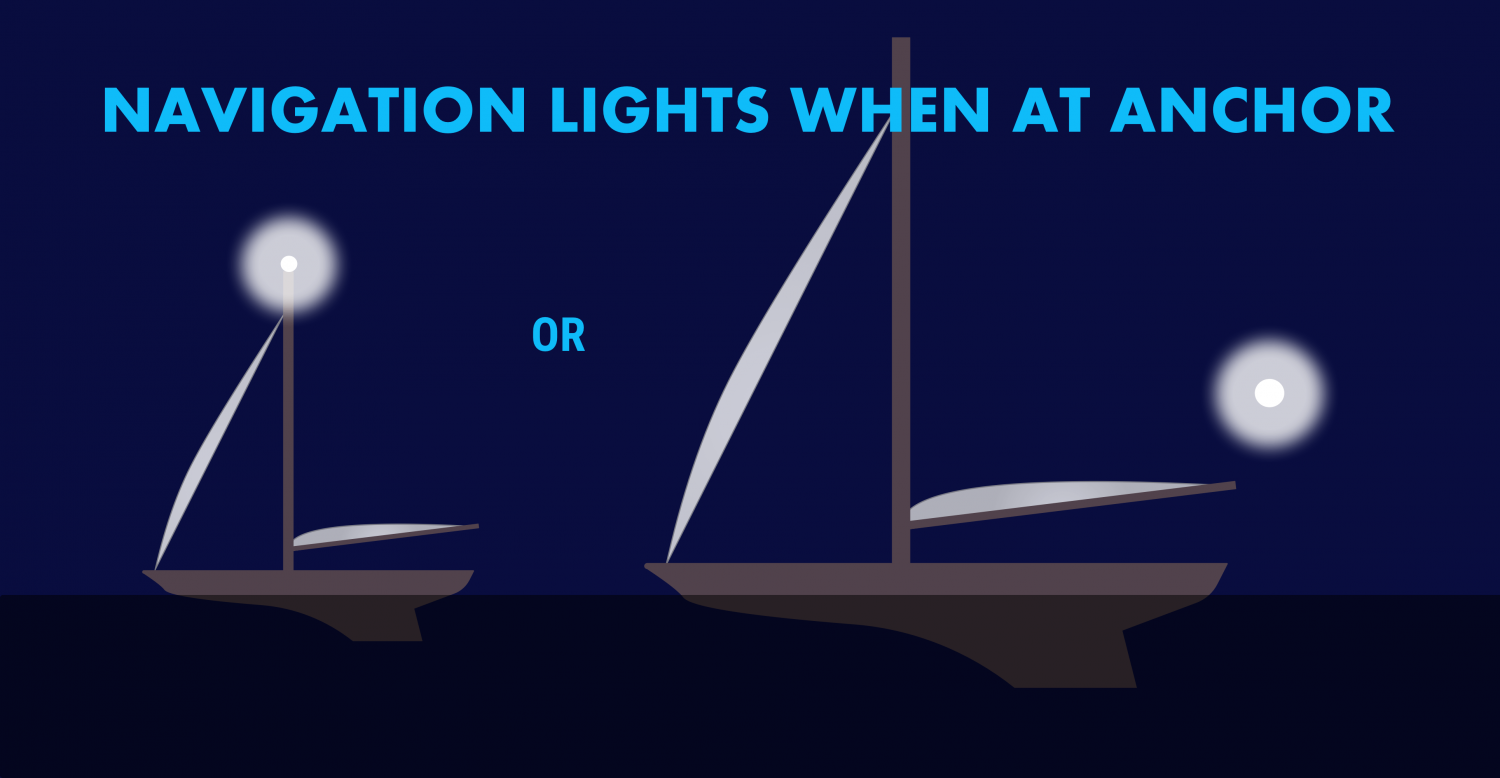
If your boat is large and has a very tall mast, you may wish to display another light closer to the waterline. Boats approaching in the dark may not see a light on a mast sixty or seventy feet in the air when they are close to your boat.
We use a simple garden path light on our stern when we anchor, left in a rod holder or flag socket. It comes on automatically at dusk and is a cheap and easy way to be more visible. There is no specific rule stating you can not display more lights than required, or the nature of any lights beyond the required all around light.
The COLREGS also specify that a round black "daymark" should be displayed in the rigging of any vessel at anchor. Very few small vessels observe this, however it is the correct display for a vessel in an anchorage.
If you tie to a mooring in a marked mooring area you are not required to display anchor lights, but there is no harm in doing so.
The other important reason to know your lights is to figure out what's going on around you at night. The water may be ablaze with white, red, green and other lights at night and they are your first key to avoiding collisions and problems.
All combinations of lights for fishing boats, commercial vessels, and so on are outside this post‘s scope. The odds are small you will encounter a submarine, seaplane or hovercraft at night, but there are regulations regarding specific lighting for each of those vessels!
There are a few fundamentals to help you figure out what that is you see on the horizon, which way it is going, and whether it is a danger to you.
Port Wine is Red
The fundamental rule is that red sidelights will ALWAYS be on the port side of a vessel, and green lights will always be on starboard. However, some vessels can use all around red and green lights for other purposes, though those will be higher than sidelights.

The light‘s on a ship is not important, some large tankers and freighters will have their sidelights far aft and put them on the superstructure for better visibility. It is not safe to assume that sidelights you can see are on the bow of large vessels .
When you can see the color, you know which way the bow is pointing. If it's red, it's pointing more or less to the left and will travel in that direction. A green light shows it is heading more or less to your right.
If you can see the red and green lights at the same time, you are looking directly at the bow of the vessel. When you are far away, this isn‘t as alarming as if you are close crossing. Seeing red and green lights together on a vessel is something you never want to see for long.
Be aware of red and green lights used in combination with other red, green and white lights. These may not be running lights and could have other significance.
Tankers, Freighters and Large Ships
Tankers, freighters and large ships will have side lights, a stern light and a masthead light. In addition, on vessels over 50 meters there will be a second masthead light further aft and higher than the forward light. The masthead light positions are a better tipoff to the bow direction and how far from the bow the sidelights might be. Remember - on a large vessel the sidelights may not be at the bow or even close to it.
USCG Inland Rules allow for a second all-around white light on large vessels on the Great Lakes instead of a second masthead light.
Fishing Boats
Fishing boats engaged in fishing will have more complex light displays. When they aren't fishing, they will show lights like any power vessel, but Rule 26 spells out light combinations that vary by the fishing activity being done. In general:
- Boats which are Trawling but not making headway will display a green all-around light over a white all-around light , and a masthead light aft of these lights. Boats making headway while trawling will show these lights, plus sidelights and a stern light.
- A vessel fishing other than trawling will show a red all-around light over a white all-around light . When making way they will also show sidelights and a stern light.
- If a vessel has gear more than 150 meters away from the boat, it will show a second all around light in the direction of the gear. The best rule is to give fishing boats as wide a berth as you can at night. They're easy to pick out if you check the top light configurations but their course may be difficult to predict.
Towing and Pushing
Towed vessels can be the most dangerous to cross, but they have the most lights to tell you what is happening. Refer to COLREGS or the USCG Rules of the Road Rule 24 for all combinations You can pick a tow/push vessel out with the following lights:
- Two or three masthead lights in a vertical line. Three masthead lights shows a tow over 200 meters. Additional masthead lights may show for larger tow vessels.
- A towing light (yellow light with the same characteristics as a stern light) directly above the stern light.
- The will also have side lights and a stern light.
- The towed vessel will show sidelights and a stern light. Lighting may vary under USCG inland rules, where towing lights may replace stern lights. Learn these differences if this is your regular cruising ground. If you think there is a tow ahead of you, always go well behind the aft most set of lights. Never go between a tow and avoid crossing ahead if possible as it may restrict their maneuverability.
Special Situations
There are several rare situations you may encounter. As a general rule, if there are a lot of lights and you don't understand them look for the sidelights on a moving vessel. If you can find them and figure out the direction it is moving, it makes the vessel easier to avoid. Stay well clear of lights you do not understand if you can avoid them without risk.
Most of these signals are used by larger, commercial vessels and you will not need them.
They use these light combinations with other light combinations. For example a towing vessel may also be restricted in maneuverability, and a vessel constrained by draft will show running lights if moving.
- Not Under Command - two all around red lights in a single line
- Restricted in Ability to Maneuver - red, white then red in a single line
- Constrained by draft - three all around red lights
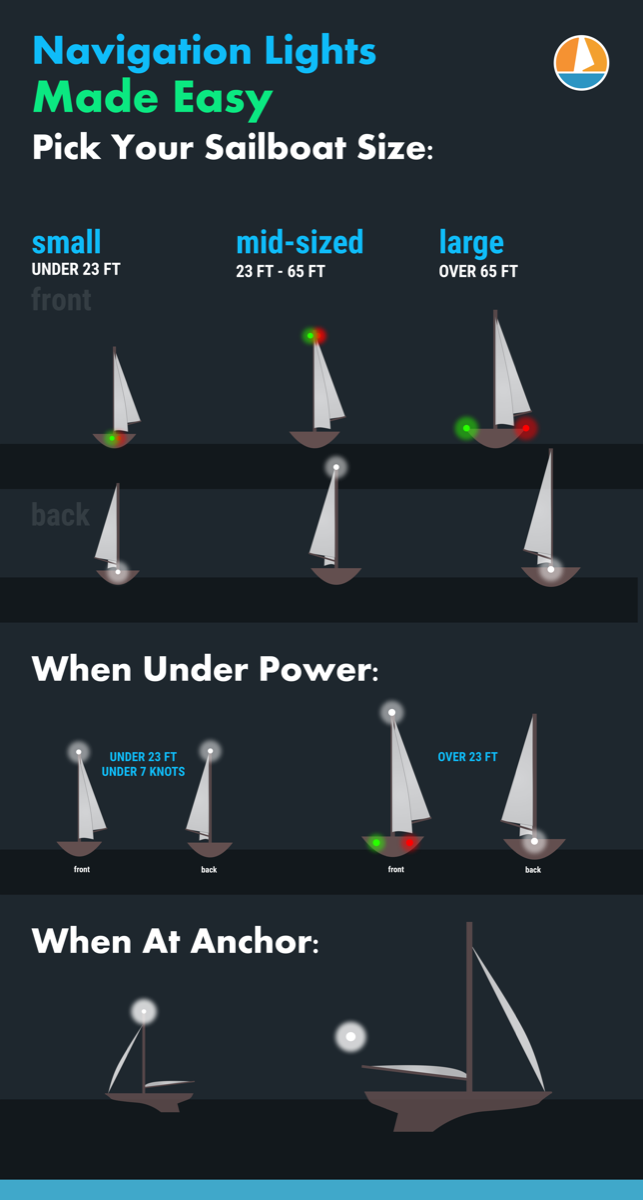
Leave a comment
You may also like, 17 sailboat types explained: how to recognize them.
Ever wondered what type of sailboat you're looking at? Identifying sailboats isn't hard, you just have to know what to look for. In this article, I'll help you.

The Ultimate Guide to Sail Types and Rigs (with Pictures)
Own your first boat within a year on any budget.
A sailboat doesn't have to be expensive if you know what you're doing. If you want to learn how to make your sailing dream reality within a year, leave your email and I'll send you free updates . I don't like spam - I will only send helpful content.
Ready to Own Your First Boat?
Just tell us the best email address to send your tips to:
Yachting World
- Digital Edition

Expert sailing advice: How to handle a lightning strike on board
- August 21, 2019
Pip Hare shares advice from sailors who have experienced a lightning strike on how to avoid getting hit by an electrical storm

The 2015 Volvo Ocean Race encountered electrical storms. Credit: Brian Carlin / Team Vestas Wind
Lightning is the thing that scares me the most at sea. Having never experienced a lightning strike I think this is mostly a fear of the unknown, coupled with a sense of helplessness.
My lightning strategy has always been to sail in the opposite direction and hope for the best. The following is a combination of my own practice and observations from sailors who’ve experienced a lightning strike first-hand.
Avoiding lightning
Thunderstorms are created in conditions where there is great instability between the upper and the lower layers of the atmosphere. Typically, thunderstorms follow an extended period of warm, still weather , but lightning can also form along very active frontal systems – this tends to follow a sustained period of average pressure, with little gradient breeze when the new front moves in quickly.
Forecasters can predict where there will be increased potential for lightning to form, but not its actual occurrence or exact location.
Specialist forecast models such as the CAPE (convective available potential energy) and the LI (lifted index) show storm potential by highlighting areas of atmospheric instability.
CAPE and LI forecasts are available via specialist weather sites and CAPE GRIBs can be obtained through some providers. Satellite images can also be useful for spotting intense areas of cumulonimbus clouds.
If planning a sailing voyage in areas where lightning could be expected, include a CAPE forecast in your daily GRIB run.
Article continues below…

What is a Spanish Plume? Thunderstorms, lightning and downdrafts explained
Earlier this summer we saw considerable thunderstorm activity over the UK and Europe, resulting in flooding and some serious injuries.…

Sailing through calms: Expert advice from ocean racer Pip Hare
Psychologically, I have always found sailing through calms to be far worse than battling any storm. Endlessly flogging sails and…
Flashes on the horizon
If you get caught out or have to sail through an area where electrical storms are expected, it’s important to prepare for all the weather a thunderstorm can dish out, not just lightning.
Thunder claps can be heard for around 25 miles, so if the sky on the other side of the horizon is alive with light but you can hear no noise then stay vigilant but don’t panic – the storm is still a way off. Keep moving.
Keep a 360° look-out: due to the immense height of thunderclouds they are pushed along by upper atmosphere wind, not the sea-level breeze. This makes it difficult to predict which way a cloud is moving, they can sneak up behind you while you are sailing upwind. The best way to track thunderclouds is using the radar or a hand-bearing compass.
Prepare for a squall: wind associated with thunderclouds can reach in excess of 40-90 knots in a matter of seconds, this will often be combined with torrential rain and drastically reduced visibility. If there’s lightning around it’s best to keep on-watch crew in the cockpit so make sure you reef early.
Preparing for a strike
Lightning can strike up to ten miles away from the cloud that generated it. Just because you are in the midst of a thunderstorm doesn’t mean you will get hit – I’ve spoken to two sailors who reported lightning striking the water next to their boat but not touching them.
Others that were struck reported varying damage to electrical equipment and none experienced structural damage or fire. Here are some of their recommendations:
- Unplug all masthead units, including wind instruments and VHF antennas and ensure ends of leads are kept apart to avoid arcing.
- As the storm gets closer turn off all electronics – modern kit has increasingly efficient internal protection, but manufacturers still advise turning it off.
- Take a fix and plot it on a paper chart. Update your log using dead reckoning.
- Avoid touching metal around the boat, such as shrouds and guardrails.
- A nearby strike will be blindingly bright. Sit in the cockpit until your night vision returns.
- Expect masthead units, VHF antennas and lights to be destroyed, so make sure you carry a good quality spare VHF antenna.
- Fluxgate compasses can lose calibration following a strike. Check all electronic compass readings with a handheld compass.
Maximising protection
By providing a direct route ‘to ground’ down which the lightning may conduct you may be able to minimise damage.
Among my small sample of interviewees, only one had a lightning protection system: this was a sloop with a deck-stepped mast on which the chainplates were bonded to the keel bolts. The masthead unit on this boat was still totally destroyed by the strike but the remaining electronics suffered no ill effects. The same sailor had experienced a strike two years earlier with no extra protection installed – in that instance all electronics were destroyed.
The remaining sailors were all in boats of less than ten years old and reported varying degrees of damage to electronics and 100% destruction of masthead units.
The simplest protection system is bonding an aluminium mast to the keel bolts. On a keel-stepped mast this is easily done as the mast heel and keel bolts are close to each other. For deck-stepped masts this can be achieved by running an adequately sized cable through the deck head and down a bulkhead or supporting pillar.
Most modern boats have the mast bonded to the keel by manufacturers – if you’re not sure lift the soleboards to check. Masts made of less conductive materials such as carbon would require a conductor cable as well.
Air terminals at least six inches higher than any antennas at the top of your mast may save your masthead units. There is also considerable debate over the need for dedicated grounding plates – this appears to be more relevant to older boats as none of my interviewees suffered ill effects through grounding to the keel bolts.
Faraday cage
There is a theory that the oven on a yacht can act as a Faraday cage, protecting anything inside it from the effects of electrostatic discharge (ESD). Handheld or portable electronics can be temporarily placed inside a metal oven to protect them during a storm.
I have no conclusive evidence this works, but I’ve always done it, reckoning it can’t do any harm – just remember to take them out before dinner!
- Print This Page
- Text Size
- Scroll To Top

Family Day Sailing... World Class Racing The Best of Both Worlds!

- Design: Sparkman & Stephens, 1938
- Over 15000 built
- More than 100 active fleets worldwide
- Length: 19'0" (5.8m)
- Beam: 6'6" (2m)
- Displacement: 700 lb (318 kg
- Draft (board down): 4'11" (151.3cm), (board up): 5" (12.8cm
- Mast height: 26'2" (7.9m)
- Sail area (main & jib): 177 sq.ft.
- (spinnaker): 300 sq.ft.
- Crew (racing): 3

The International Lightning
Get the best of both worlds without compromising either, dinghy responsiveness sportboat performance the best of both worlds, refined design, today's technology the best of both worlds, the best competition in the world or a way to get away from it the best of both worlds , club racer or international icon the best of both worlds.
The ILCA is one of the oldest and best organized class associations in sailboat racing. Its primary purpose is to serve its membership, preserve the integrity of the Lightning and provide high-quality competitive events. In addition, the ILCA publishes a monthly newsletter Lightning Flashes with up-to-date regatta news, boat brokerage and ideas on how to get the most out of your Lightning. An annual Yearbook, containing many illustrated articles, reports on major championships, fleet reports and a complete association mailing list, is also published. The professional ILCA staff is always on hand to assist both current and potential members. If you're looking for a boat you can be proud to sail, one that offers dinghy handling with the performance of a sportboat, a refined design that's free of fads, complete with the technology of today for both racing and daysailing - Get The Best Of Both Worlds. Get into a Lightning. See you on the water. David Dellenbaugh, former Lightning World Champion and starting helmsman for 1992 America's Cup defender America3, lists the top ten things he likes about the Lightning:
- There's Lightning racing almost everywhere.
- Some of the best sailors in the world sail the Lightning.
- Lightnings are available from more than one high-quality builder.
- Lightnings even 20 years old are still competitive.
- The boat is one of the best crew trainers on the water today.
- The class is not so strict as to discourage experimentation which makes the boat faster and easier to sail.
- The Lightning has interested the finest sailmakers in the world so the sails and the tuning guides look great and are easy to use.
- The Lightning is a very roomy boat for daysailing.
- Lightning sailors sail hard, but they're not too cutthroat - someone's always ready to answer questions.
- The class management is as good as you'll find in one-design sailing.


- Yachts for Sale
- SYS Yacht Sales
- cherubini-schooner-light-reign
- Event Details
Great choice! Your favorites are temporarily saved for this session. Sign in to save them permanently, access them on any device, and receive relevant alerts.
- Sailboat Guide
- Collections
The 30 most popular light sailboats


Optimist Dinghy (Int)

Catalina 22

Naples Sabot

Catalina 25

Albin Vega 27

O'Day 22

South Coast 22

O'Day 25

San Juan 21

West Wight Potter 15

Super Dorade (Sergent)

Hartley TS 16
Catalina capri 22.

Jeanneau Flirt

Archambault Surprise 25

Columbia 22
Embed this page on your own website by copying and pasting this code.

- About Sailboat Guide
©2024 Sea Time Tech, LLC
This site is protected by reCAPTCHA and the Google Privacy Policy and Terms of Service apply.

Light Air Sails (A Complete Guide)

Last Updated by
Daniel Wade
June 15, 2022
Light air sails are useful for calm conditions when the jib and mainsail alone aren't sufficient.
In this article, we'll cover the uses and benefits of light air sails, along with when to use them. We’ll also cover the different types of light air sails and their characteristics, along with how to choose the right sail in a variety of conditions.
Light air sails, such as spinnakers and genoas, are large, lightweight headsails designed to efficiently capture the wind on days with calm weather and winds under 20 knots. According to some experts, light air sails can propel boats up to 50% faster in light winds.
This complete guide uses information sourced from sailing authorities such as SAIL magazine along with advice from sail manufacturers and experienced sailboat owners.
Table of contents
What is a Light Air Sail?
A light air sail is a large unsupported headsail designed to increase the speed of vessels sailing in light winds. Light air sails resemble parachutes, and they work in a similar way. Light air sails are attached to the boat, and some aren't supported by a boom or other structural device. They catch the wind and pull the boat along from the front.
Light air sails are akin to wind-powered tow lines. They're often significantly larger than the jib , and they are usually constructed from lighter and less durable material. This normally isn't a significant issue, as sailors rarely deploy light air sails when high winds would pose a risk to them.
Light air sails are all about efficiency. A light air sail can basically double the effective size of your sail plan without adding to your hull length or mast height. This is why, when using a light air sail, it's not uncommon for sailors to achieve nearly double the speed they had before deploying.
Light air sails are often tricky to use and get used to. This is because of their size and how they rig up to the boat. They're not as structurally supported as mainsails, meaning you have to pay careful attention to the wind direction and your heading before deploying one. The same rule applies while you're using a light air sail, as it's easy to get your sail tangled in the rigging or torn.
Light Air Sail Benefits
Speed is the primary benefit of using a light air sail. As we mentioned previously, a light air sail can help you nearly double your speed in light winds. This, in turn, can help you save fuel and reach your destination twice as fast.
As you might expect, light air sails are also popular with racing crews who use them in much higher winds. Deploying one at a regatta is a guaranteed boost if the conditions are ideal, and virtually all racing sailboats have one aboard.
That said, racing isn't the only practical application of light air sails. These useful sails can make it possible to go sailing on warm, calm summer days when the wind wouldn't normally be strong enough to get you anywhere. With a light air sail, you have access to the water on days with the most pleasant weather.
Eliminate your Fuel Bill with a Light Air sail
The prospect of greatly reducing your fuel bill is attractive, and a light air sail is the most practical way to do it. And while it's true that it's easier to just lire up the engine, learning to sail with a light air sail can save money and add a new rewarding aspect to the sailing experience,
But how much money can you actually save with a light air sail? The answer is quite a lot. A light air sail works for free all day, and it can save many engine hours on light-wind days.
Is It Hard to Use a Light Air Sail?
Light air sails appear to be intimidating, especially to novice sailors. It's true that light air sails can be tricky to set up and use, but they're not significantly more frustrating than anything else on a sailboat. If you can learn to sail without one proficiently, then you can learn to sail with light air sails.
Types of Light Air Sails
There are many types of light air sail arrangements out there, and each has its own benefits and drawbacks. The most common types of light air headsails are the spinnaker and the genoa. First, we'll focus on the spinnaker.
A spinnaker is the type of sail most people think of when they picture a sailboat gliding along in light winds. Spinnakers are a lot like parachutes, and they are up ahead of the jib and often over the water.
The genoa is a traditional type of light air sail. This sail is almost always much smaller than a spinnaker. It functions as a second jib and increases the sail area of your existing sail plan. At one point, many sailboats included a genoa as an integral part of the sail plan. While not as common anymore, genoa sails are still a viable option for light wind sailing .
Spinnakers and genoas are themselves broad categories of sails. They each have several derivatives, and it's important to know the difference. Next, we'll go over the most common types of genoa and spinnaker light air sails. We'll also provide detailed information on each, so you can choose the right sail, plan for your area, and sailboat.
Genoa Types and Characteristics
If laid flat on the ground, it'd be easy to confuse a genoa for a jib. They rig up in the same place, and they perform similar functions. A genoa is a type of headsail that extends further aft than a jib, effectively increasing the sail area of your boat.
A genoa can perform the same function as a jib. This is especially true if you utilize a roller-furling mechanism. Anyone who is familiar with how to rig and reef a jib can comfortably handle a genoa.
Additionally, a genoa can be used with another headsail, increasing your light wind sailing capabilities further. One of the drawbacks to the genoa (when compared to the spinnaker) is that the genoa adds a comparatively small amount of area to the sail plan. This isn't always a drawback, as it allows you to use a genoa in a much wider range of wind conditions.
Some vessels sail almost exclusively with a genoa, as it's a versatile sail that's relatively easy to manage. If you want to increase your light air performance without drastically altering your sail plan, then consider adding a genoa to your headsail collection.
Parts of a Genoa
The parts of a genoa are very similar to the parts of a jib. After all, a genoa is really just an elongated jib. The base of a genoa is called the foot, and it runs forward to the tack and aft to the clew.
From the clew corner, the leech runs vertically to the top point of the sail, which is known as the head. The longest side of the genoa is called the luff, and it runs from the head to the tack.
The forestay, which is part of the sailboat's standing rigging, runs right along the luff of the genoa. The head of the genoa attaches to the mast, and the sheet attaches to the clew. The tack mounts to the bow or to the end of the bowsprit. Rigging a genoa gets a bit more complicated if you're using it with another light air sail, such as a spinnaker.
Spinnaker Types and Characteristics
A spinnaker is a lightweight parachute-like sail designed for light wind sailing . The spinnaker is primarily useful for downwind sailing, and it isn't structurally supported by anything other than a spinnaker pole and rigging. A spinnaker pole isn't a boom, despite resembling one.
The spinnaker pole holds out one end of the sail and serves as a pivot point. Thus, this feature keeps the spinnaker from being totally unsupported. However, not all spinnakers use poles.
Spinnakers work best when the wind is 90 to 180 degrees off the bow. Spinnakers are also known by other names, the most common of which is "chute" or "kite."
There are several distinct types of spinnaker sails. The most common types are symmetrical spinnakers, asymmetrical spinnakers, and cruising chutes. The terms "symmetrical" and "asymmetrical" refer to how the spinnaker is used and how it is shaped.
Parts of a Spinnaker
Spinnakers are complex sails with many parts. They mount to the mast at the head and to a spinnaker pole at the tack in the bottom port side corner. The control lines connect to the tack in the port corner and the clew in the starboard corner.
The edge of the sail that runs from the clew to the head is called the leech, and the edge that runs from the tack to the head is called the luff. Note that the "sheet" on the port side is actually called the afterguy, as an additional sheet called the lazy spinnaker sheet is sometimes also used.
A line called the foreguy runs from the center of the spinnaker pole to the base of the mast. Another line called the topping lift runs from the spinnaker pole to the upper part of the mast.
If used without a spinnaker pole, rigging a spinnaker can be quite simple. Using this method, you can rig the tack line to the bow and run it to the cockpit and draw the sheet all the way aft. Some spinnakers, known as parasailers, are specifically designed to be run this way.
Asymmetrical Spinnakers
Asymmetrical spinnakers are a type of light air sail that works almost like a combination between a spinnaker and a jib. It is flown from a pole and pulls primarily to one side. In other words, it powers the vessel on a one-sided asymmetrical axis.
Asymmetrical spinnakers are designed to provide the most power when sailing on a broad reach rather than directly downwind. This type of sail isn't the classic spinnaker. Rather, it became popular during the middle of the 20th century on fast racing craft.
Asymmetrical spinnakers have two sheets attached to the corners of the sail. The sheet layout is similar to a traditional jib, and it's relatively easy to control if you're experienced with headsails.
Symmetrical Spinnakers
Symmetrical spinnakers are what you think of when you hear the term "classic spinnaker." This type of spinnaker has been around for a very long time, and it's probably the most popular type of light air sail ever used.
Symmetrical spinnakers are a lot like parachutes, and they're sometimes unsupported by anything other than rigging. They fill with wind and bow out past the jib, and they're used exclusively for downwind sailing.
Handling asymmetrical spinnakers takes some care, as they're more difficult to control than standard headsails.
Cruising Chute
The cruising chute is a variety of asymmetrical spinnaker that's common on long-range bluewater sailing vessels. It's designed to be easy to handle, which is advantageous on sailboats with few crew members. Cruising chutes are preferred by single-handed sailors as well due to their simplicity.
Like the Code 0 light air sail, gennakers are a recent development that came about purely from practical experience. Fundamentally, a gennaker is a cross between a genoa and a spinnaker. It's based on an obscure 1870s sail design known as a "gollywhomper." Like the Code 0 sail, the gennaker is used primarily for racing.
This combination rigs up like a spinnaker, but the tack attaches to the bowsprit or the hull like a genoa. It's an asymmetrical sail, and it reaches greater efficiency at tighter angles. These combination sails are most useful when downwind in a run or a beam reach.
For cruising boats, a spinnaker or genoa will probably be more useful than a gennaker. These sails work optimally on precise, lightweight racing craft, and they're comparatively hard to come by. That said, some long-haul sailors have experimented with gennakers and report excellent results.
Symmetrical Spinnaker Designations
Spinnakers have designations that specify the kinds of conditions in which they can be used. These conditions range from light air to extreme air.
- 1S: Light Air Reaching
- 2S: Light Air Running
- 3S: Heavy Air Reaching
- 4S: heavy Air Running
- 5S: Extreme Air
Spinnaker designations also specify how the sail is to be used. In terms of point of sail, reaching spinnakers are used when the wind comes from some side angle, whereas running spinnakers are used when pointing directly downwind.
Spinnaker designations also specify how thick the sail material is. Light air spinnakers (1S and 2S) are made of thin, ultralight material, whereas heavy wind (3S and 4S) and extreme wind (5S) are made of more durable cloth.
Weight designation is important, as light winds may not provide the "lift" necessary to support a heavy spinnaker. Also, heavy wind can tear light air spinnakers and cause maneuverability issues.
Asymmetrical Spinnaker Designations
Like symmetrical spinnakers, asymmetrical spinnakers also have strength and wind speed designations. They follow the same basic rules as symmetrical spinnakers, with the exception of new 'Code 0° asymmetrical spinnakers.
- 1A: Light Air Reaching
- 2A: Light Air Running
- 3A: Heavy Air Reaching
- 4A: heavy Air Running
- 5A: Extreme Wind
- Code 0: Ultra Reaching Light Air
Code 0 spinnakers are essentially oversized genoas, but the IRC rates them as spinnakers anyway. Code 0 asymmetrical spinnakers are used for light air reaching. These new super- genoa sails are extremely efficient, and they've become a practical light air alternative to both traditional spinnakers and genoas.
Symmetrical vs. Asymmetrical Spinnakers
What are the advantages and disadvantages of each spinnaker type, and when should you use them? Different conditions call for different light air sails, which is why many sailors carry one of each aboard.
Some sailors choose asymmetrical spinnakers for reaching and exclusively use symmetrical spinnakers for running. This strategy, while not the only option, makes sense because symmetrical spinnakers are tricky, but they work well in straight downwind runs.
However, conditions other than the point of sail can play a more important part in the decision. Asymmetrical spinnakers have a clear advantage on short-handed sailing craft, as they're much easier to control with fewer people.
Asymmetrical spinnakers are also a popular choice for fast racing boats. Heavier displacement hull vessels, which are primarily used for offshore cruising, often opt for traditional symmetrical spinnakers. If there's room for a straight downwind run, heavy boats can achieve greater speed with a more powerful symmetrical spinnaker.
Spinnaker Poles
A spinnaker pole is simply a long, thin spar used to support one corner of a spinnaker. They can also be used on jabs and genoas, which turns them into a viable spinnaker alternative in light winds. Spinnaker poles attach to the mast and the tack of the sail.
When sailing in light winds, you will often come across boats with the spinnaker, jib, or genoa poled out. The pole makes it much easier to control the shape of the sail when the wind isn't strong; enough to shape it properly.
The term "poling out" refers to the practice of using a spar to fix the position of a normally "loose" headsail. Poling out sails is most useful when running directly downwind.
Many expert sailors recommend keeping a headsail spar on board even if you don't carry a spinnaker. It's a multi-purpose spar that's useful in a wide range of sailing conditions .
But do you need a spinnaker pole to use a spinnaker? In most cases, the answer is no. A pole isn't necessary to fly a light air sail, but it can make the process a lot easier and more controllable.
How Much do Light Air Sails Cost?
Sails are one of the more expensive aspects of sailing, and the total cost of a set of light air sails varies. Sail cost depends on the size of your boat, the type of sail, along with the material size and thickness. Some light air sails are mass-produced, while others are made by hand in specially sailmaking shops.
Pre-manufactured spinnakers are available for the most popular production cruising boats, such as those made by Catalina, O'Day, and Islander. For example, a light air cruising spinnaker for a Catalina 25 costs about $700 new. Standard "no-frills" cruising spinnakers usually cost between $500 and $2,000 for 20-foot to 40-foot sailboats.
Genoas for typical cruising sailboats usually cost about the same, though name-brand sail upgrades can cost well over $2,000. Custom sails are the priciest option, and they cost anywhere from $1,000 to $5,000 or more. That said, custom sails are often higher quality than production canvas.
Parasailers
A parasailor is a close relative of a spinnaker, and the two are often visually confused. The parasailor is actually designed for use in heavy winds, unlike the spinnaker. In winds up to 40 knots, a parasailor can be used to generate lift and keep the bow from diving too deep into the waves.
Parasailers are designed primarily for downwind sailing. The parasailor is a version of asymmetrical spinnaker that's usually made of stronger material. Additionally, parasailers have a wing that stretches horizontally across them, which provides lift to the bow of the vessel.
Parasailers can also be used in light wind conditions, though they really come into their own when the wind blows just a bit more than the ideal speed for a standard spinnaker.
Topsails and Staysails
Traditional gaff-rigged sailboats can use genoas and spinnakers just like modern Bermuda-rigged vessels. However, gaff-rigged sailboats have additional sails in their light air arsenal.
One of the most common sails used by gaff boats in light winds is the topsail. Topsails are essentially a triangular piece of canvas designed to fill the gap between the gaff and the extended topmast.
Topsails don't have anywhere near the sail area of a spinnaker or a genoa, but they're useful in a wide range of light wind maneuvers because they add additional thrust to the existing sail arrangement.
Staysails, on the other hand, are smaller triangular headsails that are run just aft of the jib. On schooners, they can be used in conjunction with other light air sails, such as the fisherman sail. Staysails are common on gaff-rigged sailboats, and they're often used with a topsail deployed as well.
Spinnaker Wind Speeds
What's the ideal wind speed for spinnakers and similar light air sails? The answer depends on the type of boat and spinnaker in question, but we'll cover some general advice for typical cruising boats.
For most cruising sailboats, 15-knot winds are probably the upper limit for spinnaker use. Generally speaking, sustained winds of 20 knots or greater are too high to use a light air spinnaker safely or efficiently.
These rules change for racing boats, which often deploy heavy-duty spinnakers in sustained winds in excess of 40 knots. Heavy air spinnakers, colloquially known as "chicken kites," are usable in heavier wind conditions and can help sailors achieve higher speeds.
Heavy air spinnakers, such as those in the 5S (symmetrical) and 5A (asymmetrical) category, are safer to use in wind speeds exceeding 20 knots.
Can You Use a Spinnaker Without a Mainsail?
Many sailors wonder if they can use a spinnaker or a chute sail without a mainsail. Generally speaking, this isn't usually the best idea. The mainsail provides shelter for the spinnaker when rigging and lowering, which makes it easier and safer to handle.
Keep in mind that it's best to avoid jibing when hoisting or lowering the spinnaker. In fact, people want to avoid jibing so much that they often rig up a preventer line. The mainsail can be used to shield the spinnaker from the wind, which helps prevent issues.
Rigging a Preventer Line
Preventer lines help stop accidental jibes when sailing downwind. Shifting winds and improper handling are the most common causes, and an unintentional jibe can be a real headache when flying a spinnaker.
The purpose of a preventer line is to stop the boom or sail from shifting to the other side. A boom preventer, also known as a boom brake, is a common solution. A boom brake doesn't actually stop the boom from shifting; rather, it slows the normally violent motion to a manageable swing.
The other kind of preventer line is called a jibe preventer. This prevention line permanently affixes to the back of the boom and prevents it from moving at all. Both of these preventer line systems can be manipulated from the cockpit and adjusted as needed.
Related Articles
I've personally had thousands of questions about sailing and sailboats over the years. As I learn and experience sailing, and the community, I share the answers that work and make sense to me, here on Life of Sailing.
by this author
Most Recent

What Does "Sailing By The Lee" Mean?
October 3, 2023

The Best Sailing Schools And Programs: Reviews & Ratings
September 26, 2023
Important Legal Info
Lifeofsailing.com is a participant in the Amazon Services LLC Associates Program, an affiliate advertising program designed to provide a means for sites to earn advertising fees by advertising and linking to Amazon. This site also participates in other affiliate programs and is compensated for referring traffic and business to these companies.
Similar Posts

How To Choose The Right Sailing Instructor
August 16, 2023

Cost To Sail Around The World
May 16, 2023

Small Sailboat Sizes: A Complete Guide
October 30, 2022
Popular Posts

Best Liveaboard Catamaran Sailboats
December 28, 2023

Can a Novice Sail Around the World?
Elizabeth O'Malley

4 Best Electric Outboard Motors

How Long Did It Take The Vikings To Sail To England?

10 Best Sailboat Brands (And Why)
December 20, 2023

7 Best Places To Liveaboard A Sailboat
Get the best sailing content.
Top Rated Posts
Lifeofsailing.com is a participant in the Amazon Services LLC Associates Program, an affiliate advertising program designed to provide a means for sites to earn advertising fees by advertising and linking to Amazon. This site also participates in other affiliate programs and is compensated for referring traffic and business to these companies. (866) 342-SAIL
© 2024 Life of Sailing Email: [email protected] Address: 11816 Inwood Rd #3024 Dallas, TX 75244 Disclaimer Privacy Policy

- Forums New posts Unanswered threads Register Top Posts Email
- What's new New posts New Posts (legacy) Latest activity New media
- Media New media New comments
- Boat Info Downloads Weekly Quiz Topic FAQ 10000boatnames.com
- Classifieds Sell Your Boat Used Gear for Sale
- Parts General Marine Parts Hunter Beneteau Catalina MacGregor Oday
- Help Terms of Use Monday Mail Subscribe Monday Mail Unsubscribe
Rewiring masthead and forward steaming light
- Thread starter PK123
- Start date Nov 1, 2023
- Forums for All Owners
- Ask All Sailors
OK ...next project on the refurb ...the steaming light half way up the mast is working just fine ...but the masthead anchor light is completely dead and went to an old fuse panel (labelled up) . Ive done a continuity check on the cables in the fuse panel and its an open loop on the masthead. Ive the undone the deck gland at the base of the mast and the wiring insulation has perished so much so that the bare wires are exposed (existing four cables in the insulation). In short im going to replace the wires and lights for the sake of longevity, electrical safety and certainty . Tips and advice would be greatly received - from double halyards on the bosuns chair to wiring strategy . Ive heard of using the mast as a ground with the lights connected locally , using a common ground and having three wires, as well as an alternative of running a single four core cable with positive and negative for each light. Thoughts and experience welcome! Mast is about 30ft
I found it easier to take the mast down and do the rewiring with the mast on saw horses. I personally do not like using the mast as ground. I ran a mast head tricolor and anchor light, a steaming light and deck flood and a mast head VHF antenna. For the mast head lights I used a common ground and for the steaming and deck flood another common ground. The mast I was working on had two channels for a sliding sleeve where the wires went but only had one sleeve. I found a way to get all wires inside that one sleeve but it was sure tight. One trick I did was I ran a tracer line from each location, mast head and mid- mast where steaming and deck flood were located. When running all the lines back in, I had to pull both tracer lines. It was time consuming but worked out well. If you could get a couple helpers it would help dj

Absolutely do not use the mast as a ground. You will be inviting all kinds of corrosion problems. Use a minimum of 16ga wire, not so much for the current carrying capacity, but for the strength. The wire has to support its own weight. While individual wires can be run, it is faster and easier to use triplex, which is three wires in a common sheath or duplex which is 2 wires in a common sheath. The sheathing helps to support the weight and adds chafe protection. It is far easier to work on a mast when it is horizontal and 3 feet off the ground than vertical. This will also give you the chance to inspect all the rigging and fittings and replace any that are worn. Pulling a mousing line up the mast with the wire will make future work easier. Use the old wire to pull the string up the mast and then the new wire. Do not use nylon line, it is too stretchy.
Use continous or double length mouse/ messenger wires. That way if your messenger to wire connection fails halfway through a pull, you still have the messenger in place.
I used one cable for the top of the mast (2 wire in my case, I do not have a tricolor on top) , and a separate cable to the spreader/steaming light location (3 wire in my case for steaming light plus deck light). I couldn't think of a good way to use only one cable and split out wires at the spreader location, but I wanted the protection of sheathed cable. I wouldn't do individual wires unless you have a conduit, and maybe not even then.
@JBP-PA ....Im thinking on similar lines - to use two duplex sheathed cables to each light fitting inside the mast but to then terminate them by joining with heat shrink connectors into a single quadruple cable so that theres just one single cable exiting the mast hole at its base. It seems that a single cable into a deck gland is the most likely to remain watertight (rather than a multi cable deck gland fitting - less is more!) . I can run that cable through the interior and split it out at the fuse panel to switch each circuit independently.....thats the plan anyway!
dlochner said: Use a minimum of 16ga wire, not so much for the current carrying capacity, but for the strength. Click to expand
Attachments

PK123 said: Thanks Dave - Theres quite a voltage drop on the cable run which will be 120ft (30ft up the mast + another 30 or so feet to the fuse panel so 60ft single trip and 120ft there and back for voltage drop calcs) ....so Im anticipating that I'll need 12 g . Click to expand
Definitely go with LED. All you need to do is switch the bulb. They only need a fraction of an amp so 16ga is more than enough.
JBP-PA said: Definitely go with LED. All you need to do is switch the bulb. Click to expand
if running in conduit, get Wire Lube from Home Depot. This is a water based lubricant made for this task
Changing from, say, an AquaSignal incandescent bulb to an AquaSignal LED bulb is hardly likely to change the characteristics. I sincerely doubt the Coast Guard will ever take a luminosity meter to a pleasure craft. Yea, I know the argument: If someone crashes into you and you don't have insurance and they are dishonest and they take you to court and they have a better lawyer than you, they could use the fact that you used LED bulb in an incandescent fixture against you. If that's of concern to you, then get official LED fixtures.
I agree with @JBP-PA regarding the use of LED’s. I chose the Aqua Signal units. I swapped the bulbs out for LED’s. The lights can be seen at the 2nm range. The fact that AS did not certify their lights with the CG was not that they did not work. It was an economic decision. I used 3 wire 14awg up the mast to power the lights on my 40’plus mast. The voltage drop is negligible at the amps used by the LED’s. A single 3wire is more compact. You can wire all the lights at once. The green is ground. The red and black or yellow serve as positive leads. You wire the switches to the power side and you. Label the wires at the terminals. It is a simple task and minimizes the number of wires and the weight in the mast.
JBP-PA said: Yea, I know the argument: If someone crashes into you and you don't have insurance and they are dishonest and they take you to court and they have a better lawyer than you, they could use the fact that you used LED bulb in an incandescent fixture against you. If that's of concern to you, then get official LED fixtures. Click to expand
Scott T-Bird
- Running lights
- Anchor light / tricolor
- Steaming Light
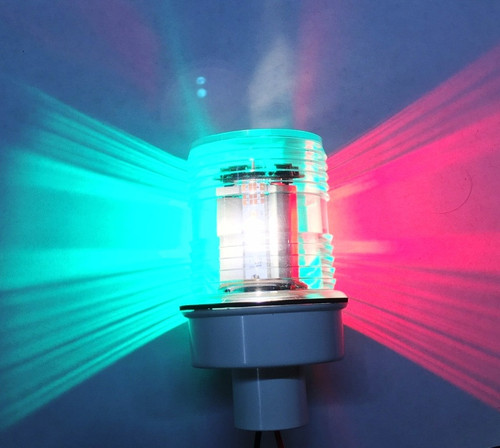
Smart LED Tri-Color, Anchor Light, and Strobe
LED Masthead/Foredeck Combination Light
rgranger said: Is this really a thing???? I know it is the lore on the net and I've seen this argument many times but... do we have an actual court case where someone (not at fault) was denied compensation because the defendant’s lawyer opened up the steaming light and found an LED bulb in the plaintiff’s fixture? I can imagine a judge siding with the defendant if they could prove the replacement bulb was not bright enough but I find it hard to believe a judge would toss an argument based upon a replacement bulb that was missing a USCG stamp. It defies logic. Any judges on this formum want to chime in? Click to expand
More than three years after the effective date of updated Coast Guard regulations requiring manufacturers of recreational boats who install navigation lights to install lights with third party certification, confusion continues. Although navigation lights were the topic of recent writings in the American Boat and Yacht Council (ABYC) Newsletter, and the subject of briefings at industry gatherings, Coast Guard and NMMA factory visits continue to identify numerous issues of navigation light fixtures and installations that do not comply with Federal regulations. Click to expand
PUTTING TO BED THE INTERNET MYTHS: The USCG, COLREG and EU test agencies do not certify standalone light bulbs (LED or incandescent), and they can only certify that a specific fixture, complete with a specific OEM light source, meets the requirements. This means that anytime you replace a bulb in a certified fixture with any kind of aftermarket non-OEM bulb it is no longer technically a "certified fixture". BUT, please note that there no USCG requirement what-so-ever for the end-user (you) to have certified fixtures on-board. None, nada. This is a requirement for boat-builders and dealers only, and the fact is that these bulbs are the brightest LED replacement bulbs available, and will easily meet visibility and color requirements for yachts up to 65 feet. They are not only brighter, but they are much more likely to be on, don't suffer from lumen depreciation, and are much more visible than the OEM incandescent bulb. They don't have a USCG certification as stand-alone bulbs, or within any specific fixtures. These bulbs have not been tested in your specific fixtures, and we have no control over how you may use this product. Therefore, it must be the user's decision alone whether to use this product to retrofit existing fixtures which will be used for navigation. Click to expand
Not a big fan of masthead anchor lights, but then the biggest boat I have owned is an ODay 25 with a 3ft draft. With a shoal draft sailboat, I'm anchoring where dinghies and powerboats often venture - and these people are not looking up 30+ft for an anchor light. So I hang an anchor light from the forestay a little above head level. A personal preference that works for me. Your mileage may vary. Fred W Stuart Mariner 19 #4133 Sweet P Yeopim Creek, Albemarle Sound, NC
Ward H said: after it somehow got smashed against a piling the first month I had my boat. Click to expand
- This site uses cookies to help personalise content, tailor your experience and to keep you logged in if you register. By continuing to use this site, you are consenting to our use of cookies. Accept Learn more…
- Central Oregon
- Oregon-Northwest
- Crime Stoppers
- KTVZ.COM Polls
- Special Reports
- NewsChannel 21 Investigates
- Ask the Mayor
- Interactive Radar
- Local Forecast
- Snow Report
- Road Conditions – Weather Webcams
- Prep Scoreboard
- Livestream Newscasts
- Livestream Special Coverage
- Local Videos
- Photo Galleries
- 21 Cares For Kids
- Community Billboard
- Community Links
- One Class At a Time
- Pay it Forward
- House & Home
- Entertainment
- Events Calendar
- Pump Patrol
- Pet Pics Sweepstakes
- Sunrise Birthdays
- Submit Tips, Pics and Video
- KTVZ Careers
- Central Oregon Careers
- Email Newsletters
- Advertise with NPG of Oregon
- Careers and Internships
- Closed Captioning
- Download Our Apps
- EEO Public Filing
- FCC Public File
- NewsChannel 21 Team
- On-Air Status
- Receiving KTVZ
- TV Listings
DCSO offers mandatory Boater Education card exams, pre-season boat inspections
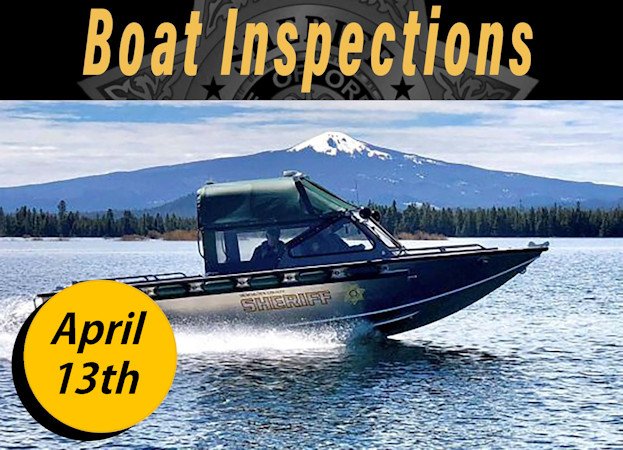
BEND, Ore. (KTVZ) -- The Deschutes County Sheriff’s Office Marine Unit is pleased to announce the return of our free mandatory Boater Education card proctored examination, as well as a pre-season opportunity to have your motorized boat inspected.
Oregon law requires Oregon residents 16 years of age and older who operate powered boats of more than 10 horsepower, to obtain their Mandatory Boater Education card. Failure to have a card under the above conditions might result in a $142 fine.
This card is not a license to operate a boat, as there is no such requirement in Oregon. Once a boater receives their card, it never has to be renewed. There is a one-time $20 cost to receive your card and duplicate cards are available for $16.
Boat operators can also access the testing material and take the test on-line through the Oregon State Marine Board website, but there is generally a fee associated with the test and receiving a certificate. Exam participants will be shown an informational video prior to the proctored examination and will have an opportunity to ask questions.
Additional exam preparation material can be found on the Oregon State Marine Board web site under “Study Guide.” A 75-question multiple choice test will be given; a minimum score of 70% is needed to pass. The tests are graded upon completion; necessary paperwork and information on how to receive their card from the Oregon State Marine Board will be given.
The following is the schedule of classes for 2024. All exams run from 9am-12pm and are held at the Deschutes County Sheriff’s Office in Bend (63333 Hwy 20 West). There is no sign up or registration for the exam, but please arrive a few minutes prior to the start of the class to check in. For additional information, go to www.sheriff.deschutes.org, or boat-ed.com/oregon/ or contact the Sheriff’s Office at 541-388-6501.
2024 Class Dates: May 11th, June 8th, July 13th and August 24th
The Deschutes County Sheriff’s Office will also be providing an opportunity for boaters to have their boats inspected at three different locations in Deschutes County. The inspections will be offered on Saturday, April 13th, 2024, at Big Country RV in Redmond, the Main Sheriff’s Office parking lot in Bend and the Deschutes County Sheriff’s Office substation in La Pine. DCSO Marine Deputies and Volunteers will be present at the above locations on April 13th, between the hours of 9am-2pm.
Jump to comments ↓
KTVZ news sources
Related articles.

‘Dreams are coming true’: ‘Dream Boldly: The Grand AdvenChair’ film, featuring inventor Geoff Babb, to debut at COCC

Assistance League of Bend’s Operation School Bell in 31st year, provides new school clothes to thousands of students

DCSO: Alfalfa man called 911 to report he set own house ablaze, then blocked driveway to keep firefighters away

Bend-Redmond Habitat for Humanity recruiting for service opportunities through AmeriCorps
KTVZ NewsChannel 21 is committed to providing a forum for civil and constructive conversation.
Please keep your comments respectful and relevant. You can review our Community Guidelines by clicking here
If you would like to share a story idea, please submit it here .

IMAGES
VIDEO
COMMENTS
Find a yacht. Schooner Cruising/Racing Sailboat «Light Reign» built by manufacturer CHERUBINI in 2000 — available for sale. Yacht location: USA. If you are looking to buy a yacht «Light Reign» or need additional information on the purchase price of this CHERUBINI, please call: +1-954-274-4435 (USA)
If dominating PHRF and schooner races from Gloucester, Mass, through the Chesapeake, Key West, Florida, St. Pete to Mexico and into the Caribbean sounds like...
If you would like to buy a yacht Light Reign — CHERUBINI or would like help answering any questions concerning purchasing, selling or chartering a yacht, please call +1(954)274-4435 ... Cruising/Racing Sailboat Model Year: 2000 Year Built: 2000 Country: United States Basic Information LOA: 48' 0" (14.63m) LWL: 44' 0" (13.41m) Beam: 13' 0" (3 ...
The Lightning is an American sailing dinghy that was designed by Olin Stephens of Sparkman & Stephens, as a one-design racer and first built in 1938.. An accepted World Sailing class, the boat is one of the most popular one-design sailing classes in the United States and is also raced in several other countries.. The design was developed into a smaller boat, as a trainer for the Lightning, the ...
As such a power boat, and by extension all sailboats, MUST, without question show one green light on the starboard bow and one red light on the port bow and one all around white light or lights while operating in reduced visibility. These lights should shine at all 360 degrees of visibility with the bow lights shining at an angle of dead ahead ...
Why Buy a Lightning. The Ultimate One-Design Sailboat. Sean Fidler - USA 14969. The Lightning combines a perfect balance of sail / tuning adjustments with boat / crew size. At only 700 lbs., Lightnings are light enough to trailer and launch easily. They are also small enough to be sailed easily with 3 people.
Catalina 16.5. jlodrummer. Catalina Yachts are synonymous with bigger boats but they have some great and smaller boats too such as Catalina 16.5. This is one of the best small sailboats that are ideal for family outings given that it has a big and roomy cockpit, as well as a large storage locker.
The Lightning, a 19-foot trailerable centerboard sloop, was originally designed by Sparkman & Stephens as an affordable family day-sailor and racing boat. She has evolved into one of the most popular
The boat can be sailed dry. It can however turtle. If this occurs, external help will be needed. Don't buy a Lightning if you don't EVER want to go swimming or get wet, but don't be afraid of a capsize either, particularly in a post 1985 boat. Other details the first time buyer should know about include saltwater.
Catalina 315. nwyachting. This is a nifty pocket cruiser that raises the quality bar for solo sailors with extreme comfort and performance. With just a 9.45 meter hull, the Catalina 315 has more internal room than most classics and remains superb for solo sailing.
The International Lightning Class Association is one of the oldest and best organized class associations in sailboat racing. Its primary purpose is to serve its membership, preserve the integrity of the Lightning and provide high-quality competitive events. In addition, the Lightning Class publishes monthly e-blasts and a quarterly newsletter ...
When its time to reign in the excitement, theres no need for any white knuckle gymnastics, just uncleat the double-ended set-and-douse line, and retract the asymm into its turtle. Caging the beast has never been so easy. ... Fast, light boats are fun to sail, but there are a few tradeoffs that boat buyers should keep in mind. The first is that ...
100-200 = Light; 200-275 = Moderate; 275-350 = Heavy; 350+ = Ultraheavy; D/L = (Disp / 2240) / (0.01*LWL)^3. ... ", (International Marine, Camden, Maine, 1997), states that a boat with a BN of less than 1.3 will be slow in light winds. A boat with a BN of 1.6 or greater is a boat that will be reefed often in offshore cruising. Derek Harvey ...
Berts Boat Yard North Weymouth, Massachusetts Asking $17,250. 42' Hunter Passage 42 Grenada West Indies Asking $85,000. 33' Precision Boat Works 11 Meter South Lake Tahoe, California Asking $15,000. 41' K&K Custom Vancouver Asking $40,000. 40' sabre 402 Annapolis, Maryland Asking $199,000.
They must show an arc of 112.5 degrees from centerline of the bow. Stern light - A white light on the stern of the boat showing an unbroken arc of 135 degrees from centerline of the vessel. All-round light - A light showing in an unbroken arc of 360 degrees. The good news is you need not measure these angles.
Lightning is a 18 ′ 11 ″ / 5.8 m monohull sailboat designed by Sparkman & Stephens and built by Nickels Boat Works, Inc., Skaneateles Boat & Canoe Co., Helms - Jack A. Helms Co., Siddons & Sindle, Lippincott Boat Works, J.J. Taylor and Sons Ltd., Lockley Newport Boats, Eichenlaub Boat Co., Mobjack Manufacturing Corp., Clark Boat Company, Allen Boat Co., and Loftland Sail-craft Inc ...
Take a fix and plot it on a paper chart. Update your log using dead reckoning. Avoid touching metal around the boat, such as shrouds and guardrails. A nearby strike will be blindingly bright. Sit ...
Lightning, a nineteen-foot trailerable centerboard sloop, was originally designed by Sparkman & Stephens as an affordable family day-sailor and racing boat. She has evolved into one of the most popular and competitive one-design racing classes in the world. Awarded ISAF International Class status, the Lightning is sailed in more than thirteen ...
cherubini-schooner-light-reign; boat 7159623 not found. Contact our sales team for immediate assistance or expand your search settings in a new search. Refresh. 1306 Main Street ...
The 30 most popular light sailboats All; Ultralight; Light; Moderate; Heavy; ultraheavy; Sailboat. ... 1980 artekno International H-Boat $3,500 USD. Mesa, AZ, US 1977 Catalina 22 $4,000 USD. Have a sailboat to sell? List it for free and it will show up here ...
Like the Code 0 light air sail, gennakers are a recent development that came about purely from practical experience. Fundamentally, a gennaker is a cross between a genoa and a spinnaker. It's based on an obscure 1870s sail design known as a "gollywhomper." Like the Code 0 sail, the gennaker is used primarily for racing.
A 10.5ftinflatable with 16in tubes, for example, is a much wetter ride than a 9.5ft dinghy with 19in tubes. That said, for seasonal sailors with only short-term cruising in mind, a 9.5ft dinghy is light and easy to store. However, for long-term cruising, you will want to get the longest dinghy you can handle on your boat.
Change to an LED that draws less than 1 an and you can go with the less expensive and lighter 16ga. 30 feet from the base of the mast to the panel seems a bit long on a 27' boat. You can also cheat a bit and run 12 ga to the mast and 16 or 14 up the mast. Just be sure to fuse for the smaller wire. J.
The following is the schedule of classes for 2024. All exams run from 9am-12pm and are held at the Deschutes County Sheriff's Office in Bend (63333 Hwy 20 West).